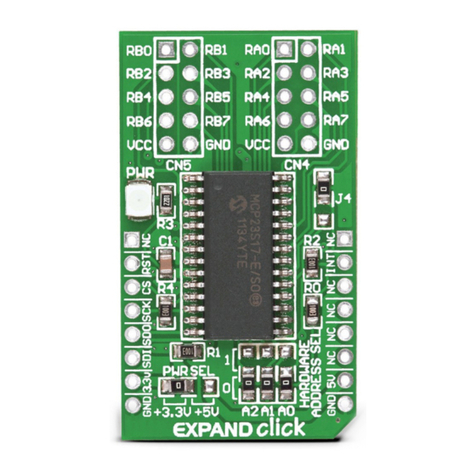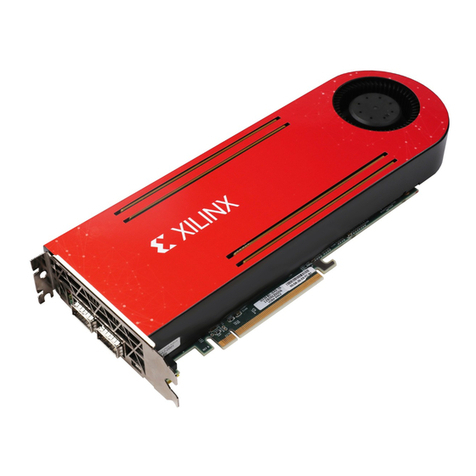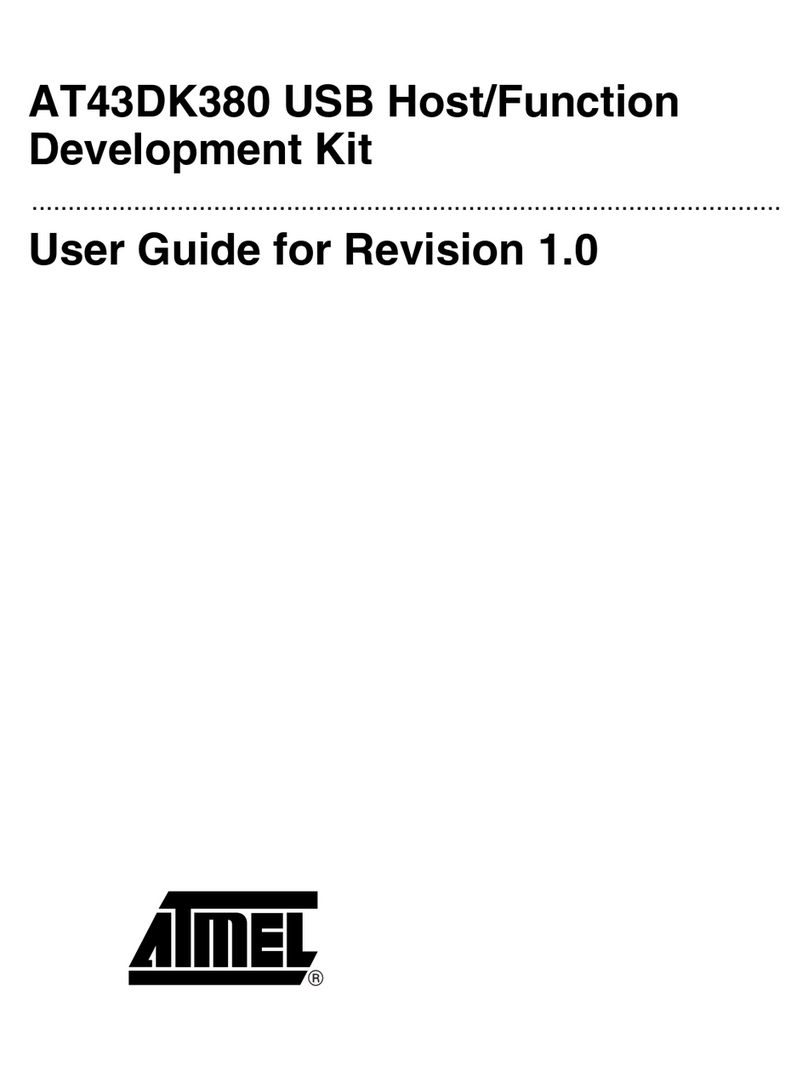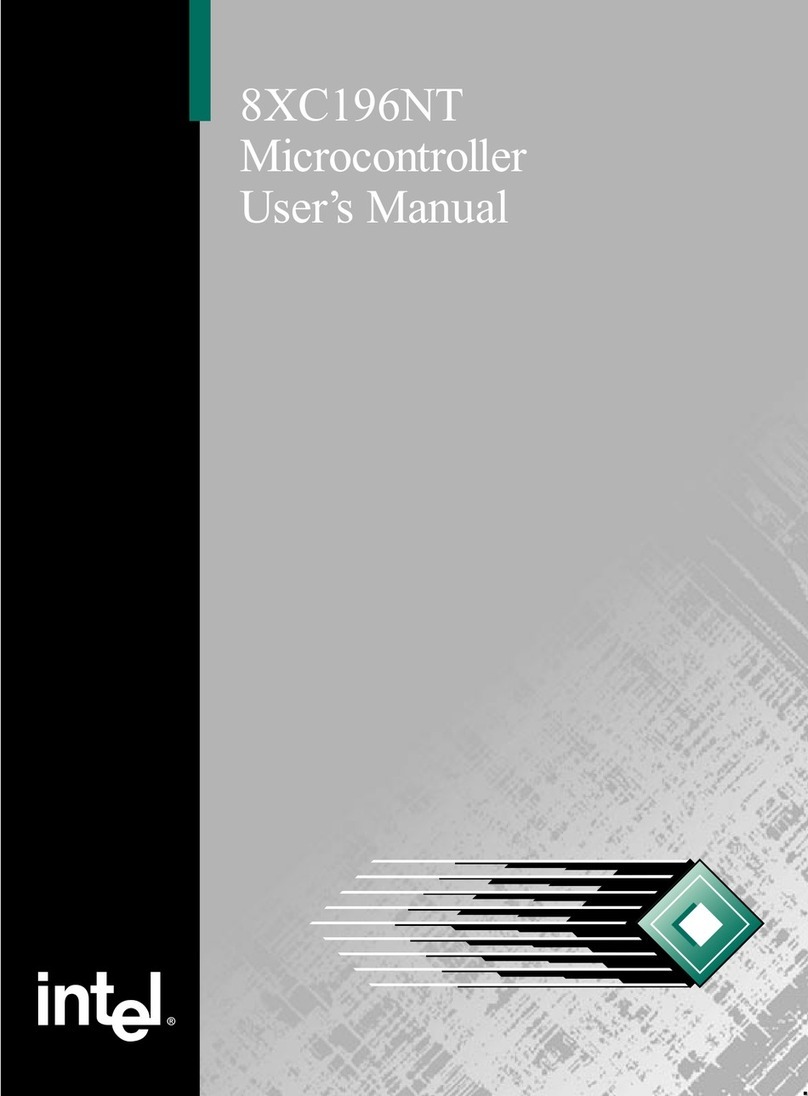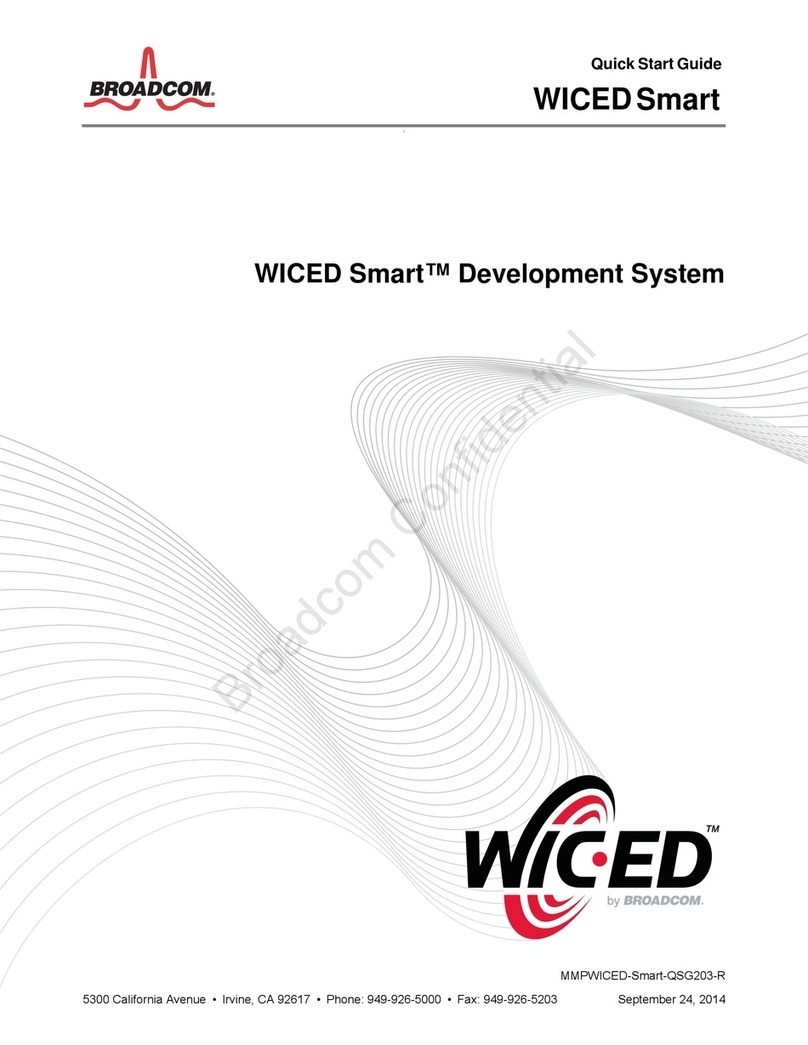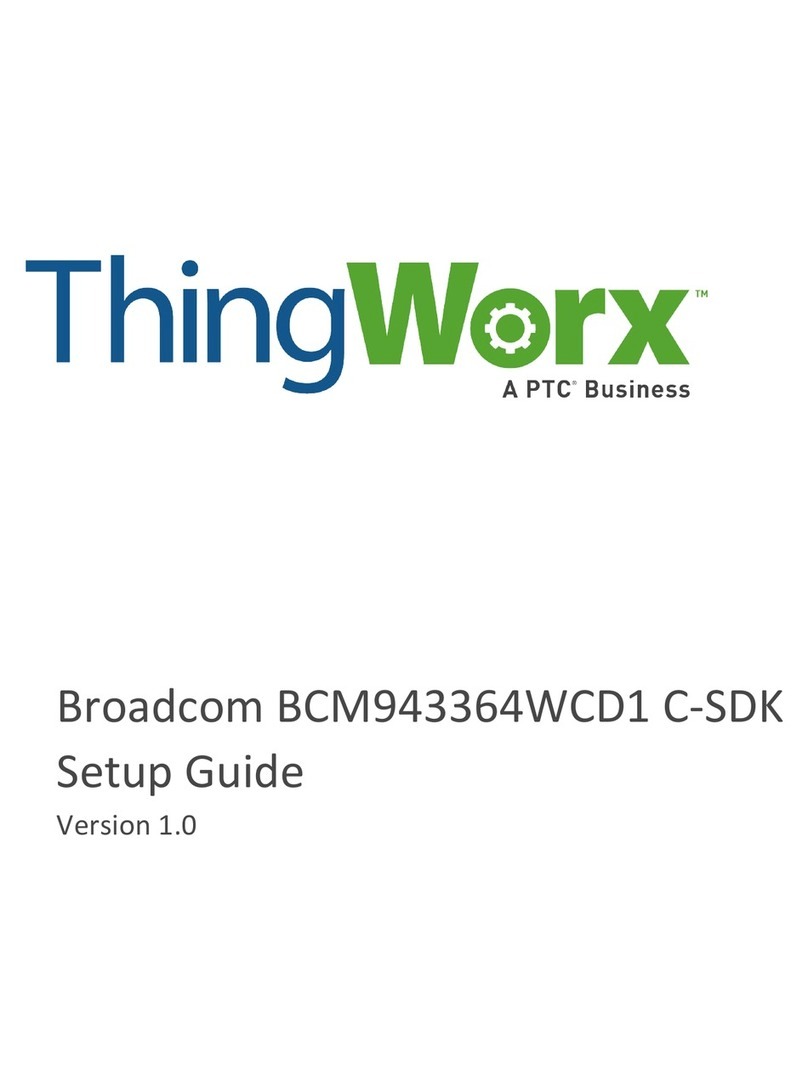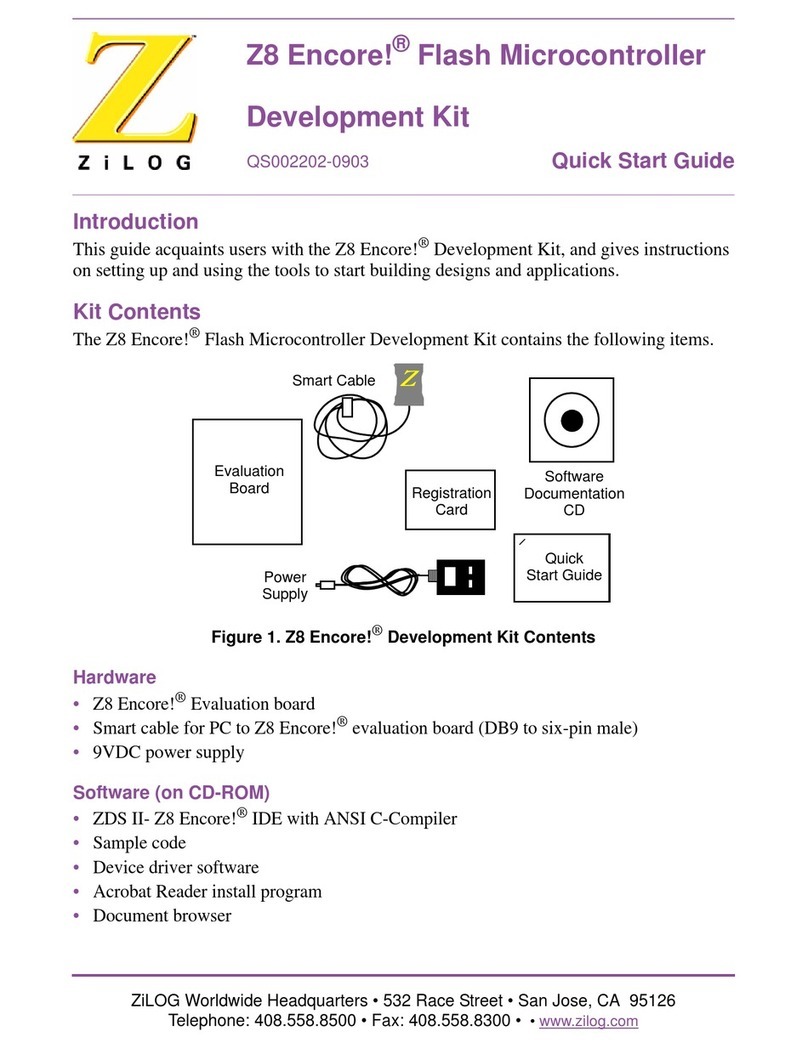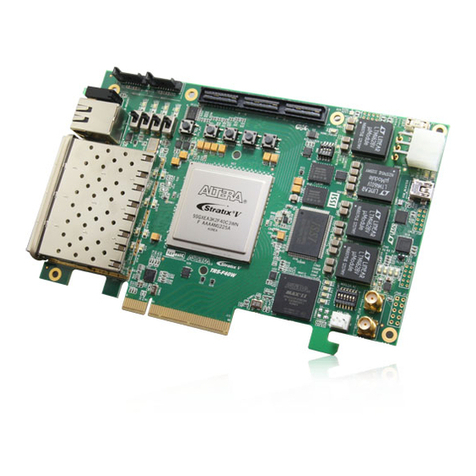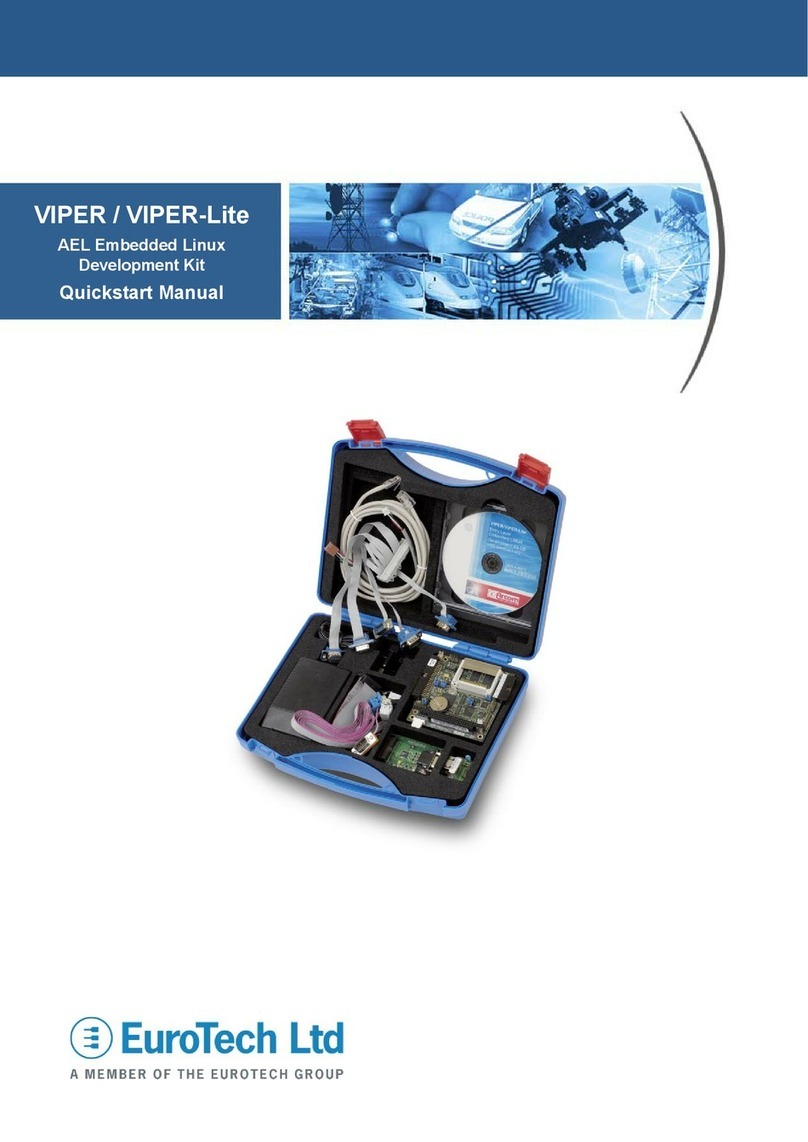Sferalabs Strato Pi CM 4S 32GB User manual

!
Strato Pi CM User Guide
August 2022
Revision 021
SCMB20X Strato Pi CM Solo
SCMB20XP1 Strato Pi CM 3+ 8GB
SCMB20XP2 Strato Pi CM 3+ 16GB
SCMB20XP3 Strato Pi CM 3+ 32GB
SCMB20X41 Strato Pi CM 4S 8GB
SCMB20X42 Strato Pi CM 4S 16GB
SCMB20X43 Strato Pi CM 4S 32GB
!

Safety information 4
Qualified personnel 4
Hazard levels 4
Safety instructions 5
General safety instructions 5
Battery 6
Introduction 7
Features 8
Device identification 9
Hardware Setup 10
Opening the case 10
Closing the case 11
Raspberry Pi Compute Module installation 11
How to flash the eMMC 12
Replacing the RTC backup battery 12
Terminal block 14
Power supply 14
Dedicated GPIO pins 15
Software installation and configuration 16
Installing the Strato Pi utility 16
Installing the Strato Pi kernel module 16
Installing the Real Time Clock software 17
Testing the Real Time Clock 17
Configuring the serial port 18
Configuring the Ethernet port 18
Using Strato Pi CM 19
Real Time Clock 19
RS-485 serial port 19
USB ports power management 20
Secure element 21
Push button 22
LED 22
Hardware watchdog 22
Reset cycle 23
Advanced configuration 23
Block diagram 24
1
Strato Pi CM User Guide

Be sure to always remove the power supply before inserting or
removing the Raspberry Pi Compute Module from the Strato Pi CM.
Follow all applicable electrical safety standards, guidelines,
specifications and regulations for installation, wiring and operations of
Strato Pi CM.
Carefully and fully read this Strato Pi CM user guide before installation.
Strato Pi CM is not authorised for use in safety-critical applications where a failure of the
product would reasonably be expected to cause personal injury or death. Safety-critical
applications include, without limitation, life support devices and systems, equipment or
systems for the operation of nuclear facilities and weapons systems. Strato is neither
designed nor intended for use in critical military or aerospace applications or environments
and for automotive applications or environment. Customer acknowledges and agrees that
any such use of Strato Pi CM is solely at Customer's risk, and that Customer is solely
responsible for compliance with all legal and regulatory requirements in connection with
such use.
Sfera Labs S.r.l. may make changes to specifications and product descriptions at any time,
without notice. The product information on the web site or materials is subject to change
without notice.
Please download and read the Sfera Labs Terms and Conditions document available at:
https://www.sferalabs.cc
Strato and Sfera Labs are trademarks of Sfera Labs S.r.l. Other brands and names may be
claimed as the property of others.
"
Copyright © 2019-2022 Sfera Labs S.r.l. All rights reserved.
3
Strato Pi CM User Guide

Safety information
Carefully and fully read this user guide before installation and retain it for future reference.
Qualified personnel
The product described in this manual must be operated only by personnel qualified for the
specific task and installation environment, in accordance with all relevant documentation
and safety instructions. A qualified person should be capable of fully identifying all
installation and operation risks and avoid potential hazards when working with this product.
Hazard levels
This manual contains information you must observe to ensure your personal safety and
prevent damage to property. Safety information in this manual are highlighted by the safety
symbols below, graded according to the degree of danger.
Indicates a hazardous situation which, if not avoided, will result in death or serious
personal injury.
Indicates a hazardous situation which, if not avoided, may result in death or serious
personal injury.
Indicates a hazardous situation which, if not avoided, can result in minor or moderate
personal injury.
Indicates a situation which, if not avoided, can result in damage of property.
DANGER
WARNING
CAUTION
NOTICE
4
Strato Pi CM User Guide

Safety instructions
General safety instructions
Protect the unit against moisture, dirt and any kind of damage during transport, storage
and operation. Do not operate the unit outside the specified technical data.
Never open the housing. If not otherwise specified, install in closed housing (e.g.
distribution cabinet). Earth the unit at the terminals provided, if existing, for this purpose.
Do not obstruct cooling of the unit. Keep out of the reach of children.
Life threatening voltages are present within and around an open control cabinet.
When installing this product in a control cabinet or any other areas where dangerous
voltages are present, always switch off the power supply to the cabinet or equipment.
Risk of fire if not installed and operated properly.
Follow all applicable electrical safety standards, guidelines, specifications and regulations
for installation, wiring and operations of this product.
The Raspberry Pi Compute Module board could generate a substantial amount of heat
when the software forces the CPU and/or GPU to operate at high load levels. Ensure that
the product is properly installed and ventilated to prevent overheat.
The connection of expansion devices to this product may damage the product and other
connected systems, and may violate safety rules and regulations regarding radio
interference and electromagnetic compatibility.
Use only appropriate tools when installing this product. Using excessive force with tools
may damage the product, alter its characteristics or degrade its safety.
WARNING
WARNING
NOTICE
5
Strato Pi CM User Guide

Battery
This product uses a small lithium non-rechargeable battery to power its internal real time
clock (RTC).
Improper handling of lithium batteries can result in an explosion of the batteries and/or
release of harmful substances.
Worn-out or defective batteries can compromise the function of this product.
Replace the RTC lithium battery before it is completely discharged. The lithium battery
must be replaced only with an identical battery. See the "Replacing the RTC backup
battery" section for instructions.
Do not throw lithium batteries into fire, do not solder on the cell body, do not recharge, do
not open, do not short-circuit, do not reverse polarity, do not heat above 100°C and protect
from direct sunlight, moisture and condensation.
Dispose of used batteries according to local regulations and the battery manufacturer's
instructions."
WARNING
6
Strato Pi CM User Guide

Introduction
Strato Pi CM is an extremely powerful and compact industrial server based on the
Raspberry Pi Compute Module, suitable for use in professional and industrial applications
where reliability and service continuity are key requirements, and housed in a compact 2
modules DIN rail case.
It is available in several versions. Strato Pi CM 3+ ships with a Raspberry Pi Compute
Module 3+ (8GB, 16GB and 32GB eMMC versions) pre-installed. Strato Pi CM 4S ships
with a Raspberry Pi Compute Module 4S (8GB, 16GB and 32GB eMMC versions) pre-
installed. Strato Pi CM Solo doesn't include the Compute Module and is compatible with all
current versions of the Compute Module: 1, 3, 3+, 4S. It is not compatible with Compute
Modules Lite models.
The information contained in this manual covers all Strato Pi CM versions. All Strato Pi CM
versions are identical, except for the Compute Module model installed.
This manual generally refers to all products as Strato Pi CM.
7
Strato Pi CM User Guide

Features
Strato Pi CM, all versions:
✓9-28Vdc power supply, with surge and reverse polarity protection, and 1.1A resettable
fuse
✓up to 1.9A max continuous current (3A peaks) to the 5V Raspberry Pi Compute Module
power supply input pins (at 24Vdc)
✓real time clock with replaceable CR1220 Lithium / Manganese Dioxide back-up battery
✓standard RS-485 interface to the Raspberry Pi serial line, with opto-isolator and
electrostatic discharge protection
✓10/100 Ethernet port
✓two USB 2.0 type-A ports, with individual power control and fault detection
✓hardware watchdog implemented in the Strato Pi CM micro-controller, fully independent
from the Raspberry Pi Compute Module, controlled via the GPIO pins of the Raspberry
Pi board and acting on the Raspberry Pi Compute Module hardware reset line
✓integrated boot loader for the Strato Pi micro-controller, allowing in-field firmware
upgrades directly from the Raspberry Pi
✓embedded Microchip ATECC608 secure element chip
✓front-panel LEDs for power supply, serial line activity, and one GPIO-controlled LED
✓recessed push-button, hidden behind the front-panel, connected to a GPIO pin
✓power supply and serial connections on a pluggable terminal block
✓packaged in a compact 2 modules DIN rail case.
Strato Pi CM Solo:
✓compatible with Raspberry Pi Compute Module 1, Raspberry Pi Compute Module 3,
Raspberry Pi Compute Module 3+ 8GB, Raspberry Pi Compute Module 3+ 16GB,
Raspberry Pi Compute Module 3+ 32GB, Raspberry Pi Compute Module 4S 8GB,
Raspberry Pi Compute Module 4S 16GB, Raspberry Pi Compute Module 4S 32GB
Strato Pi CM 3+:
✓pre-installed and tested Raspberry Pi Compute Module 3+, 8GB, 16GB or 32GB eMMC
versions.
Strato Pi CM 4S:
✓pre-installed and tested Raspberry Pi Compute Module 4S, 8GB, 16GB or 32GB
eMMC versions
8
Strato Pi CM User Guide

Device identification
The device can be identified with the information provided in the rating and identification
plate, permanently attached to the side of the case.
EXAMPLE RATING AND IDENTIFICATION PLATE
9
Strato Pi CM User Guide

Hardware Setup
STRATO PI CM CONNECTION DIAGRAM
For the initial set-up, the plastic DIN rail must be removed to access the circuit boards and
internal connectors.
The case also needs to be opened if the factory configuration of the RS-485 termination
resistors must be changed (see below).
Before opening the Strato Pi CM case, disconnect all power sources and any connection
to external devices, including USB and Ethernet cables.
Opening the case
Follow these steps, in the exact order, to open the case:
1. Remove the green pluggable terminal block
2. Remove the black plastic DIN rail hook
3. With a small flat screwdriver gently separate the bottom case and boards assembly
from the top cover; lift the side next to the DIN rail hook first
4. The circuit boards assembly will simply slide out of the case, as it is mechanically held
in place by the bottom case only
NOTICE
10
Strato Pi CM User Guide

Closing the case
5. Replace the circuit boards assembly inside the case; ensure that the USB/Ethernet
connectors are aligned with the opening in the case
6. Replace the case bottom, inserting the side opposite to the DIN rail hook first, then
gently push the other side in place
7. Replace the black plastic DIN rail hook.
OPENING AND CLOSING THE CASE
Raspberry Pi Compute Module installation
To install your own Compute Module in Strato Pi CM Solo, or replace the pre-installed
module, no tools are required. The Compute Module fits in a standard 200 pin DDR2
SODIMM (JEDEC MO-224 mechanical specification) slot.
Static electricity can damage the components in your system. To protect your system's
components from static damage during the installation process, touch any of the unpainted
metal surfaces on your computer's frame or wear an ESD wrist strap before handling
internal components. Either method will safely discharge static electricity that's naturally
present in your body.
When handling the Raspberry Pi Compute Module, be sure to hold it along the side edges
using your thumb and index finger. Avoid touching the components and pin connectors as
damage can occur.
Align the notches on the Compute Module with the ridges in the DDR2 slot. Insert the
module using firm and even pressure, and push down on the module until the clips on the
side of the slot snap into place.
NOTICE
11
Strato Pi CM User Guide

How to flash the eMMC
In order to flash the Compute Module's eMMC memory, an additional board, like the
Compute Module IO Board V3, shall be used. Use the latest RPIBOOT utility from
Raspberry Pi and refer to its documentation for installation and usage details.
1
Alternatively, if using the Compute Module 4S (or a Compute Module 3/3+ with USB host
boot mode previously enabled ) you can boot the unit from USB , access via SSH, and
2 3
flash the eMMC which will be available as a local mass storage device.
Replacing the RTC backup battery
Strato Pi CM has a hardware real time clock with a dedicated long-life non-rechargeable
back-up battery.
Strato Pi CM is shipped with a CR1220 Lithium / Manganese Dioxide (Li/MnO2) battery
4
installed.
The battery is only used to power the RTC chip when the main power is not available.
Depending on operating conditions it should last up to two years if the Strato Pi CM is not
powered, more if it regularly receives external power.
The RTC backup battery holder is on the vertical circuit board, opposite the Compute
Module slot. In the Strato Pi CM, the battery is not accessible from the outside. You should
first remove the case body to gain access to the Strato Pi CM circuit boards. Follow the
procedure described at the beginning of this chapter to open and replace the case.
Improper handling of lithium batteries can result in an explosion of the batteries and/or
release of harmful substances.
Worn-out or defective batteries can compromise the function of this product.
KEEP OUT OF REACH OF CHILDREN. Swallowing may lead to serious injury or death in
as little as 2 hours due to chemical burns and potential perforation of the esophagus.
Immediately see doctor.
Replace the RTC lithium battery before it is completely discharged. Replace the battery
every 5 years even if the battery is still working properly. The lithium battery must be
replaced only with an identical CR1220 or BR1220 battery.
WARNING
https://www.raspberrypi.com/documentation/computers/compute-module.html#flashing-the-
1
compute-module-emmc
https://www.raspberrypi.com/documentation/computers/raspberry-pi.html#usb-host-boot-mode
2
https://www.raspberrypi.com/documentation/computers/raspberry-pi.html#booting-from-usb-
3
mass-storage
BR1220 batteries (Lithium Poly-carbonmonofluoride) can also be used, for improved shelf and
4
service life.
12
Strato Pi CM User Guide

Do not throw lithium batteries into fire, do not solder on the cell body, do not recharge, do
not open, do not short-circuit, do not reverse polarity, do not heat above 100°C and protect
from direct sunlight, moisture and condensation.
Dispose of used batteries according to local regulations and the battery manufacturer's
instructions.
Before opening the Strato Pi CM case, disconnect all power sources and any connection
to external devices, including USB cables.
Use a non-conductive pin or small tool to help extract the battery from its holder. Insert the
new battery with a gentle push. You don't need tools to insert the battery. The battery is
held into place by a spring contact.
Be sure to insert the battery so that the negative (-) terminal is facing the vertical circuit
board, and touches the contact pad at the center of the battery holder, as shown in the
photo below.
Reversing the battery polarity may damage the product.
The real time clock will reset its time immediately when the RTC backup battery is
disconnected.
RTC BACKUP BATTERY HOLDER
RTC BACKUP BATTERY INSTALLED
NOTICE
13
Strato Pi CM User Guide

Terminal block
Strato Pi CM has a 5 positions terminal block for power and serial connections.
The maximum conductor cross section is 1.5 mm2(16 AWG), or 0.5 mm2when using
ferrules (highly recommended). Recommended stripping length is 5 mm. Screw thread is
M2. Never exceed 0.25 Nm torque when tightening the screws.
Power supply
Strato Pi CM can be powered with DC voltage only:
✓DC: nominal voltage range 9V to 28.0V.
Respect the correct polarity shown in the schematic diagram (+ -). The power supply
circuit implements reverse polarity protection using an auto resetting fuse and surge
protection up to ±1000V/2ohms 1.2/50μs.
A blue on-board LED, also visible through the front panel of the DIN rail case, is lit when
power supply is available. This LED also blinks while the Compute Module boot process is
in progress.
The Strato Pi CM power supply stage is optimised to deliver up to 1.9A at 5V to the
Raspberry Pi Compute Module.
The voltage regulator can supply up to 3.0A 5V output short duration current peaks
(<1sec).
Because Strato Pi CM has a 1.1A resettable fuse (polyfuse) on the power supply line, the
maximum current that its regulator can deliver is also limited by this fuse, and depends on
the input voltage.
The following table lists the typical measured output current of the power supply stage at
different input voltages, and the corresponding input current. At high input voltage levels,
the voltage regulator’s thermal protection becomes the limiting factor.
STRATO PI CM POWER SUPPLY STAGE TYPICAL IN/OUT VOLTAGE AND CURRENT5
FUSE marks the level where the polyfuse opens to limit input current; REG is the voltage
5
regulator's thermal protection limit.
14
Strato Pi CM User Guide

Dedicated GPIO pins
Strato Pi CM uses some of the Raspberry Pi Compute Module GPIO pins. These pins
should not be used for other functions.
GPIO pin
Direction
Description
GPIO2/SDA
I2C SDA line for the real time clock
GPIO3/SCL
I2C SCL line for the real time clock
GPIO14/TXD
out
serial TX line
GPIO15/RXD
in
serial RX line
GPIO32
out
cycle high/low for watchdog heartbeat
GPIO39
out
set to high to enable the watchdog
GPIO17
in
high on watchdog timeout
GPIO18
out
set to high to enable the shutdown cycle
GPIO16
out
set to high to turn on LED L1
GPIO38
in
high when P1 button pressed
GPIO37
out
soft serial TX for Strato MCU configuration
GPIO33
in
soft serial RX for Strato MCU configuration
GPIO30
out
set to low to enable USB1 (bottom) power
GPIO0
in
low on USB1 fault
GPIO31
out
set to low to enable USB2 (top) power
GPIO1
in
low on USB2 fault
GPIO6
out
expansion bus enable (reserved for future use)
GPIO34
in/out
expansion bus aux/act line (reserved for future use)
15
Strato Pi CM User Guide

Software installation and configuration
All features of Strato Pi CM are controlled via dedicated GPIO, the I2C bus and a soft
serial RX/TX interface to the embedded micro-controller and can be used with most
operating systems and programming languages.
The following software installation notes are based on the Raspberry Pi OS (formerly
Raspbian) operating system.
Installing the Strato Pi utility
The Strato Pi utility is a simple command-line script to control some of Strato Pi’s basic
functions.
Run the following commands to download and install the Strato Pi utility:
$ cd /usr/local/bin
$ sudo wget http://sferalabs.cc/files/stratocmduo/strato
$ sudo chmod 755 strato
You can run the Strato Pi utility without arguments to print its options:
$ strato
Usage: strato led on|off|length_millis|length_millis pause_millis repeats
strato usb1|usb2 on|off|fault
strato expbus on|off
strato watchdog enable|disable|heartbeat|timeout
strato reset
All commands should be run as superuser, so always use sudo to run strato.
Installing the Strato Pi kernel module
The Strato Pi kernel module can be used to easily access Strato Pi CM's features via sysfs
file system.
Refer to the following instructions to download and install the module or go to:
https://github.com/sfera-labs/strato-pi-kernel-module
for updated instructions, usage details and examples.
Download and install:
$ sudo apt install git raspberrypi-kernel-headers
$ git clone --depth 1 --recursive https://github.com/sfera-labs/strato-pi-
kernel-module.git
$ cd strato-pi-kernel-module
$ make
$ sudo make install
$ dtc -@ -Hepapr -I dts -O dtb -o stratopi.dtbo stratopi.dts
$ sudo cp stratopi.dtbo /boot/overlays/
Add the following line to /boot/config.txt:
dtoverlay=stratopi
Optionally, to be able to use the sysfs files not as super user, create a new group "stratopi"
and set it as the module owner group by adding an udev rule:
$ sudo groupadd stratopi
16
Strato Pi CM User Guide

$ sudo cp 99-stratopi.rules /etc/udev/rules.d/
and add your user to the group, e.g., for user "pi":
$ sudo usermod -a -G stratopi pi
Reboot:
$ sudo reboot
You will find the directory /sys/class/stratopi/ which gives you access to Strato Pi CM's
functionalities.
Installing the Real Time Clock software
The RTC is based on the Microchip MCP79410 module and is connected to the Raspberry
Pi via its I2C serial bus.
Before downloading the installation utility, you should enable I2C and install the “i2c-tools”
package.
To en ab le I 2C, run the “raspi-config” configuration utility:
$ sudo raspi-config
Then go to “Interfacing Options”, “I2C” and select “yes” to enable the I2C interface, then
reboot your Raspberry Pi.
To install the “i2c-tools” package:
$ sudo apt-get update
$ sudo apt-get install i2c-tools
With these prerequisite installs completed, you should download and run Strato Pi’s
installation script:
$ cd
$ wget http://sferalabs.cc/files/strato/rtc-install
$ chmod 755 rtc-install
$ sudo ./rtc-install
If the script completes with no errors, delete the installation script and reboot:
$ rm rtc-install
$ sudo reboot
Testing the Real Time Clock
Assuming you are connected to the Internet and your Pi was able to reach a public NTP
(Network Time Protocol) server, you should see the current date and time using the “date”
command:
$ date
Thu Dec 10 18:02:32 CET 2015
Also check the date and time stored in the hardware clock:
$ sudo hwclock -r
Thu 10 Dec 2015 06:03:01 PM CET -0.546570 seconds
17
Strato Pi CM User Guide

If the returned date and time is not correct, or “hwclock” returns an error, use the “-w”
option to set the hardware clock to the current time:
$ sudo hwclock -w
Then recheck the time stored in the hardware clock to ensure it matches. Linux may have
failed to automatically update the hardware clock after the last reboot if its internal
registers contained invalid values.
If the RTC still doesn’t work, you should check if the Pi sees the RTC chip on the I2C bus.
Run these two commands:
$ sudo modprobe -r rtc_ds1307
$ sudo i2cdetect 1
WARNING! This program can confuse your I2C bus, cause data loss and worse!
I will probe file /dev/i2c-1.
I will probe address range 0x03-0x77.
Continue? [Y/n]
0 1 2 3 4 5 6 7 8 9 a b c d e f
00: -- -- -- -- -- -- -- -- -- -- -- -- --
10: -- -- -- -- -- -- -- -- -- -- -- -- -- -- -- --
20: -- -- -- -- -- -- -- -- -- -- -- -- -- -- -- --
30: -- -- -- -- -- -- -- -- -- -- -- -- -- -- -- --
40: -- -- -- -- -- -- -- -- -- -- -- -- -- -- -- --
50: -- -- -- -- -- -- -- 57 -- -- -- -- -- -- -- --
60: 60 -- -- -- -- -- -- -- -- -- -- -- -- -- -- 6f
70: -- -- -- -- -- -- -- —
You should see “6f” in the address list. This is the address of the RTC.
If the RTC address is detected, double check your software installation for issues at the
Linux modules level.
Run the “lsmod” command to list the loaded modules and check that “i2c_dev” and
“i2c_bcm2708” are both listed.
If the RTC address is not detected, the cause could be a hardware problem, on the Strato
board or the Raspberry Pi. If you have another Pi or Strato board, try swapping them to
isolate the faulty board.
Configuring the serial port
By default, the Linux serial console is active on the main UART (/dev/ttyAMA0). If you are
using the RS-485 interface for your applications, you should disable it to avoid console
data being sent to the serial port.
To disable the ttyAMA0 console service, run:
$ sudo systemctl disable [email protected]
and edit the /boot/cmdline.txt file to delete the serial console configuration:
console=serial0,115200
Configuring the Ethernet port
Only when using the Compute Module 4S, add the following line in the /boot/config.txt file
to enable the Ethernet port:
dtoverlay=dwc2,dr_mode=host
18
Strato Pi CM User Guide

Using Strato Pi CM
Real Time Clock
Strato Pi CM has a hardware real time clock with a dedicated long-life non-rechargeable
back-up battery.
Once the RTC modules and configuration files are properly installed, you will simply use
the date and time commands to control the hardware clock.
RS-485 serial port
Strato Pi CM uses the Raspberry Pi standard UART TX/RX pins on the GPIO connector to
implement a standard RS-485 port.
The RS-485 port is isolated from the Raspberry Pi’s serial lines using dedicated opto-
couplers and from the main power supply with a high-efficiency DC-DC converter. This
configuration should prevent ground loops between devices connected through the serial
line.
The RS-485 TX/RX switching is implemented automatically in the Strato Pi’s micro-
controller, based on speed and number of bits detection, and is completely transparent to
the software controlling the UART on Raspberry Pi. It can also be manually configured to
work with fixed communication parameters (speed, bits, parity, stop bits) or in passive
mode (refer to the "Strato Pi Logic Controller Advanced Configuration Guide" document for
additional information).
The RS-485 line has 620 Ohm pull-up and pull-down resistors on lines A and B. The
biasing resistors ensure that, during idle periods the data lines are kept at a stable voltage
level and prevent false triggering of receiver input. These resistors can be disabled by
removing jumpers JP1 and JP2 respectively.
A 100 Ohm termination resistor between A and B is connected when the J1 micro-switch is
moved toward the terminal block.
RS-485 JUMPERS AND SWITCH SCHEMATIC
19
Strato Pi CM User Guide
This manual suits for next models
12
Table of contents
Popular Microcontroller manuals by other brands
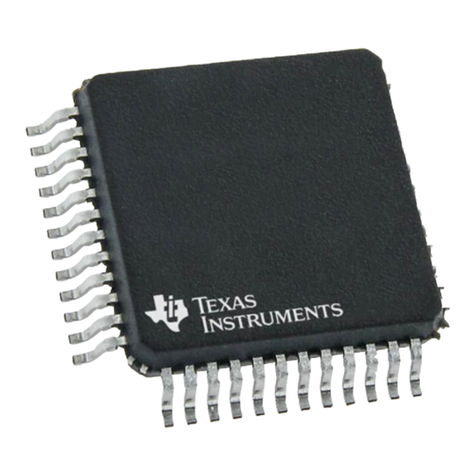
Texas Instruments
Texas Instruments BQ769142 manual

Trenz Electronic
Trenz Electronic TE0300 user manual

Sierra Wireless
Sierra Wireless mangOH Yellow Getting started guide
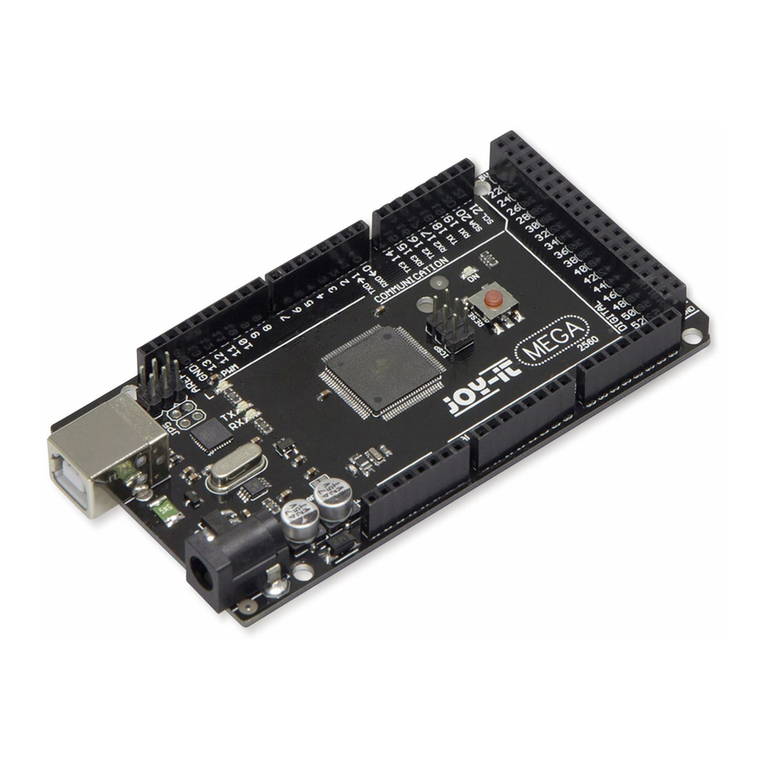
Joy-it
Joy-it ARD MEGA2560R3 manual
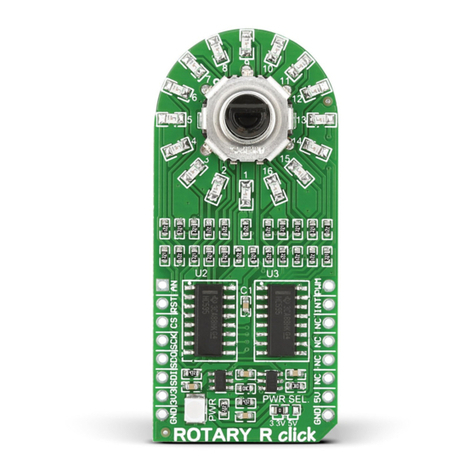
mikroElektronika
mikroElektronika ROTARY R click quick start guide
NXP Semiconductors
NXP Semiconductors Freescale K22 Reference manual

